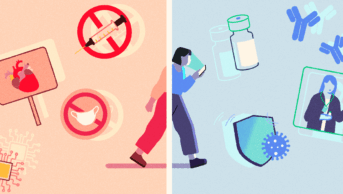A survey by a pet insurance company reported in the Veterinary Times highlights the problems associated with owners administering human over-the-counter (OTC) medicines to their animals.
The most common drugs given by respondents who owned up to the practice were antihistamines (36%), paracetamol (28%), antiseptic creams (21%) and ibuprofen (17%). Colleagues are reminded that products unlicensed for veterinary use can only be used legally if they have been prescribed by a veterinary surgeon under the Cascade.
Short of a full-scale interrogation it is often impossible to ascertain for what reason OTC drugs are being bought but if customers should give a clue as to the intended administration to an animal then they should be advised accordingly and the sale declined. It has to be acknowledged that such action in one pharmacy could very soon result in a more guarded request for the product in another or even transferring the purchase to a supermarket where interaction with staff is generally minimal. The important issue is a concern for animal welfare and, if this is emphasised, then there is a good chance that this outcome can be avoided.
Most households may already have antihistamines, analgesics and antiseptic creams ‘in stock’ and there is a further serious risk associated with the use of prescribed medicines.
The Veterinary Times article suggests that in side-lining vets, owners are seeking to avoid paying professional fees (and possibly inflated drug costs). However, the research quoted found that 42% of cat and dog owners worry more about the health of their pet than of their partner, so it is not surprising that they will resort to administering widely available human medicines in the misguided belief that if they must be safe for animals, too. In practice, owners risk causing significant damage to their pets’ health.
Steven Kayne
Alison Pyatt
Directors, Veterinary Pharmacy Education Programme
Harper Adams University
Newport


